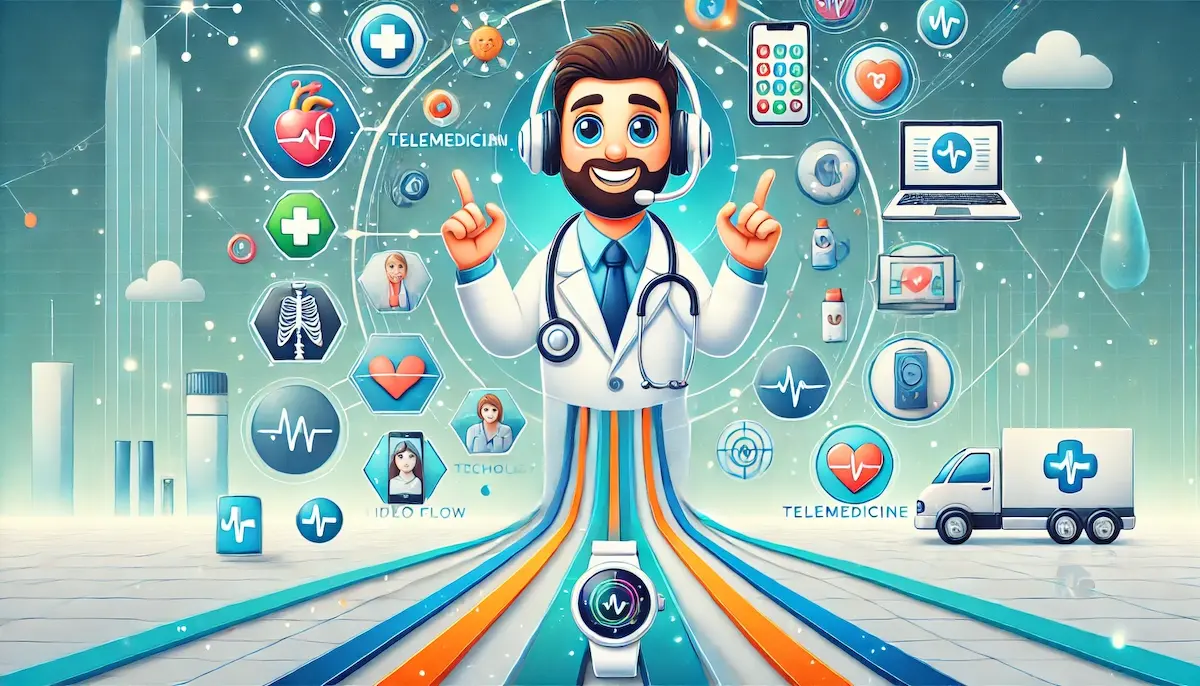In an increasingly digital world, telemedicine is transforming the way healthcare is delivered. By leveraging technology to provide medical care remotely, telemedicine is making healthcare more accessible, efficient, and convenient for patients and providers alike. Let’s explore what telemedicine is, how it works, and its impact on the healthcare industry.
What is Telemedicine?
Telemedicine refers to the practice of using telecommunications technology to deliver medical care and services at a distance. This can include video consultations, remote monitoring, electronic health records, and mobile health applications. Telemedicine enables healthcare professionals to diagnose, treat, and monitor patients without the need for an in-person visit.
How Does Telemedicine Work?
Video Consultations
One of the most common forms of telemedicine is video consultations, where patients and healthcare providers connect through secure video conferencing platforms. These virtual visits allow doctors to assess symptoms, provide medical advice, and even prescribe medications, all from the comfort of the patient’s home.
Remote Monitoring
Telemedicine also includes remote monitoring, which involves the use of wearable devices and sensors to track patients’ vital signs and health data in real-time. This information is transmitted to healthcare providers, who can monitor the patient’s condition and intervene if necessary. Remote monitoring is especially useful for managing chronic conditions like diabetes, hypertension, and heart disease.
Mobile Health Applications
Mobile health applications, or mHealth, are apps designed to support health and wellness. These apps can offer services such as appointment scheduling, medication reminders, health tracking, and access to medical records. Patients can use these tools to manage their health proactively and stay connected with their healthcare providers.
Electronic Health Records (EHRs)
Electronic health records are digital versions of patients’ medical histories, accessible to both patients and healthcare providers. EHRs facilitate the sharing of information, improve coordination of care, and ensure that all healthcare providers have access to up-to-date patient information.
Benefits of Telemedicine
Increased Access to Care
Telemedicine breaks down geographical barriers, making healthcare accessible to people in remote or underserved areas. Patients who might otherwise have difficulty traveling to a healthcare facility can receive care from their homes, improving access to medical services.
Convenience and Efficiency
Telemedicine offers unparalleled convenience for both patients and providers. Patients can avoid long wait times and travel expenses, while doctors can see more patients in less time. This efficiency can lead to quicker diagnosis and treatment, improving overall healthcare outcomes.
Cost Savings
By reducing the need for in-person visits, telemedicine can lower healthcare costs for patients and providers. Telemedicine can also reduce the burden on healthcare facilities, leading to more efficient use of resources and lower operational costs.
Improved Patient Engagement
Telemedicine encourages patients to take an active role in their healthcare. With easier access to medical advice and health monitoring tools, patients are more likely to follow treatment plans and engage in preventive care, leading to better health outcomes.
Enhanced Continuity of Care
Telemedicine supports continuous care by allowing patients to stay connected with their healthcare providers. Regular follow-ups and remote monitoring help manage chronic conditions more effectively and ensure that any changes in a patient’s health are promptly addressed.
Applications of Telemedicine
Primary Care
Telemedicine is widely used in primary care to address common health concerns such as colds, infections, and minor injuries. Virtual consultations can provide quick and effective care, reducing the need for in-person visits.
Mental Health
Telemedicine has significantly impacted mental health care by providing remote counseling and therapy sessions. This approach is particularly beneficial for patients who may feel more comfortable discussing their concerns from a familiar environment.
Chronic Disease Management
Remote monitoring and virtual consultations are invaluable for managing chronic diseases. Patients with conditions like diabetes, hypertension, and asthma can receive ongoing care and support without frequent trips to the doctor’s office.
Specialist Consultations
Telemedicine facilitates access to specialists who may not be available locally. Patients can receive expert advice and treatment plans through virtual consultations, improving the quality of care for complex conditions.
Challenges and Future Outlook
While telemedicine offers numerous benefits, it also faces challenges such as ensuring data security and privacy, integrating telemedicine into existing healthcare systems, and addressing regulatory and reimbursement issues. Additionally, not all patients have access to the necessary technology or internet connectivity.
Despite these challenges, the future of telemedicine looks promising. Technological advancements, increased acceptance by healthcare providers and patients, and supportive policies are driving the growth of telemedicine. As telemedicine continues to evolve, it is poised to play a crucial role in making healthcare more accessible, efficient, and patient-centered.
Blockfine thanks you for reading and hopes you found this article helpful.
